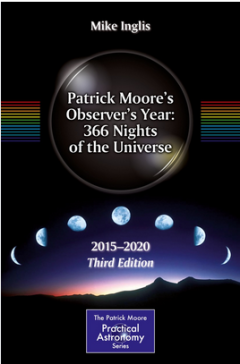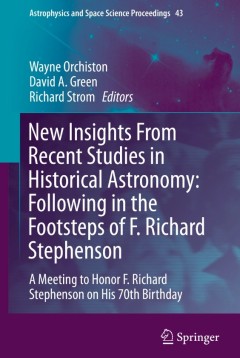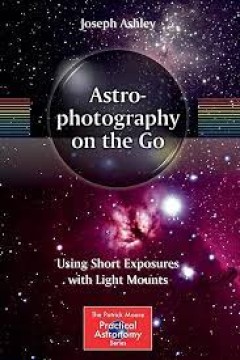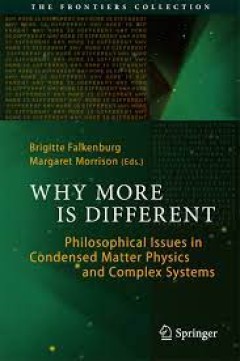Filter by

Patrick Moore’s Observer’s Year: 366 Nights of the Universe
Sir Patrick Moore, dalam benak banyak orang, adalah astronom paling terkenal di abad kedua puluh. Hal ini terutama berlaku di Inggris Raya, di mana serial televisinya di BBC, The Sky at Night, wajib ditonton oleh para astronom amatir, dan bahkan banyak astronom profesional. Kecintaannya pada subjek dan kegembiraan yang dia promosikan sangat melegenda. Sayangnya, dia meninggal pada bulan Desembe…
- Edition
- -
- ISBN/ISSN
- 978-3-319-18678-8
- Collation
- -
- Series Title
- The Patrick Moore Practical Astronomy Series
- Call Number
- T 520.92 ING p c.1

Galactic Encounters Our Majestic and Evolving Star-System, From the Big Bang…
Written by William Sheehan, a noted historian of astronomy, and Christopher J. Conselice, a professional astronomer specializing in galaxies in the early universe, this book tells the story of how astronomers have pieced together what is known about the vast and complicated systems of stars and dust known as galaxies. The first galaxies appeared as violently disturbed exotic objects when the…
- Edition
- -
- ISBN/ISSN
- 978-0-387-85347-5
- Collation
- -
- Series Title
- -
- Call Number
- -

New Insights From Recent Studies in Historical Astronomy: Following in the Fo…
This book contains papers from a conference held to celebrate the 70th birthday of one of the world’s foremost astronomical historians, Professor F. Richard Stephenson, the latest recipient of the American Astronomical Society’s highest award for research in astronomical history, the LeRoy Doggett Prize. Reflecting Professor Stephenson’s extensive research portfolio, this book brings toge…
- Edition
- 1
- ISBN/ISSN
- 978-3-319-07613-3
- Collation
- XXX, 350
- Series Title
- Astrophysics and Space Science Proceedings
- Call Number
- -

Astrophysics Is Easy! An Introduction for the Amateur Astronomer
Astrophysics is often –with some justification – regarded as incomprehensible without the use of higher mathematics. Consequently, many amateur astronomers miss out on some of the most fascinating aspects of the subject. Astrophysics Is Easy! cuts through the difficult mathematics and explains the basics of astrophysics in accessible terms. Using nothing more than plain arithmetic and simpl…
- Edition
- -
- ISBN/ISSN
- 978-3-319-11644-0
- Collation
- -
- Series Title
- -
- Call Number
- -

Astrophotography on the Go Using Short Exposures with Light Mounts
No longer are heavy, sturdy, expensive mounts and tripods required to photograph deep space. With today's advances in technology, all that is required is an entry-DSLR and an entry level GoTo telescope. Here is all of the information needed to start photographing the night sky without buying expensive tracking mounts. By using multiple short exposures and combining them with mostly ‘freeware�…
- Edition
- -
- ISBN/ISSN
- 978-3-319-09831-9
- Collation
- -
- Series Title
- -
- Call Number
- -

Worlds Beyond Our Own The Search for Habitable Planets
This is a book on planets: Solar system planets and dwarf planets. And planets outside our solar system – exoplanets. How did they form? What types of planets are there and what do they have in common? How do they differ? What do we know about their atmospheres – if they have one? What are the conditions for life and on which planets may they be met? And what’s the origin of life on Earth…
- Edition
- -
- ISBN/ISSN
- 978-3-319-09894-4
- Collation
- -
- Series Title
- -
- Call Number
- -

Investigations of Angular Light Scattering by Complex Atmospheric Particles
This book experimentally investigates the angular light scattering properties of three atmospherically relevant particles: ice crystals, dust particles and secondary organic aerosol particles. Key optical quantities under examination are the near-backscattering depolarisation properties and the angular light scattering function. The main question is how these parameters are related to the parti…
- Edition
- -
- ISBN/ISSN
- 978-3-7315-0554-9
- Collation
- -
- Series Title
- -
- Call Number
- 520 JAR i

Budget Astrophotography : Imaging with Your DSLR or Webcam
Here are clear explanations of how to make superb astronomical deep-sky images using only a DSLR or webcam and an astronomical telescope – no expensive dedicated CCD cameras needed! The book is written for amateur astronomers interested in budget astrophotography – the deep sky, not just the Moon and planets – and for those who want to improve their imaging skills using DSLR and webcam…
- Edition
- -
- ISBN/ISSN
- 978-1-4939-1773-0
- Collation
- -
- Series Title
- -
- Call Number
- 520

Why More Is Different Philosophical Issues in Condensed Matter Physics and C…
The physics of condensed matter, in contrast to quantum physics or cosmology, is not traditionally associated with deep philosophical questions. However, as science - largely thanks to more powerful computers - becomes capable of analysing and modelling ever more complex many-body systems, basic questions of philosophical relevance arise. Questions about the emergence of structure, the nature o…
- Edition
- -
- ISBN/ISSN
- 978-3-662-43911-1
- Collation
- X, 280
- Series Title
- -
- Call Number
- -

What If We Don't Die? The Morality of Immortality
This book deals with the very real possibility of earthly immortality and the human and societal implications of such immortality, including whether it is desirable. It looks at what makes immortality appear so attractive and at the possibility that we would be better served with longer lives and the freedom to terminate our lives at the time when life has given us all the joy, inspiration a…
- Edition
- -
- ISBN/ISSN
- 978-3-319-19093-8
- Collation
- VIII, 183
- Series Title
- -
- Call Number
- -
 Computer Science, Information & General Works
Computer Science, Information & General Works  Philosophy & Psychology
Philosophy & Psychology  Religion
Religion  Social Sciences
Social Sciences  Language
Language  Pure Science
Pure Science  Applied Sciences
Applied Sciences  Art & Recreation
Art & Recreation  Literature
Literature  History & Geography
History & Geography